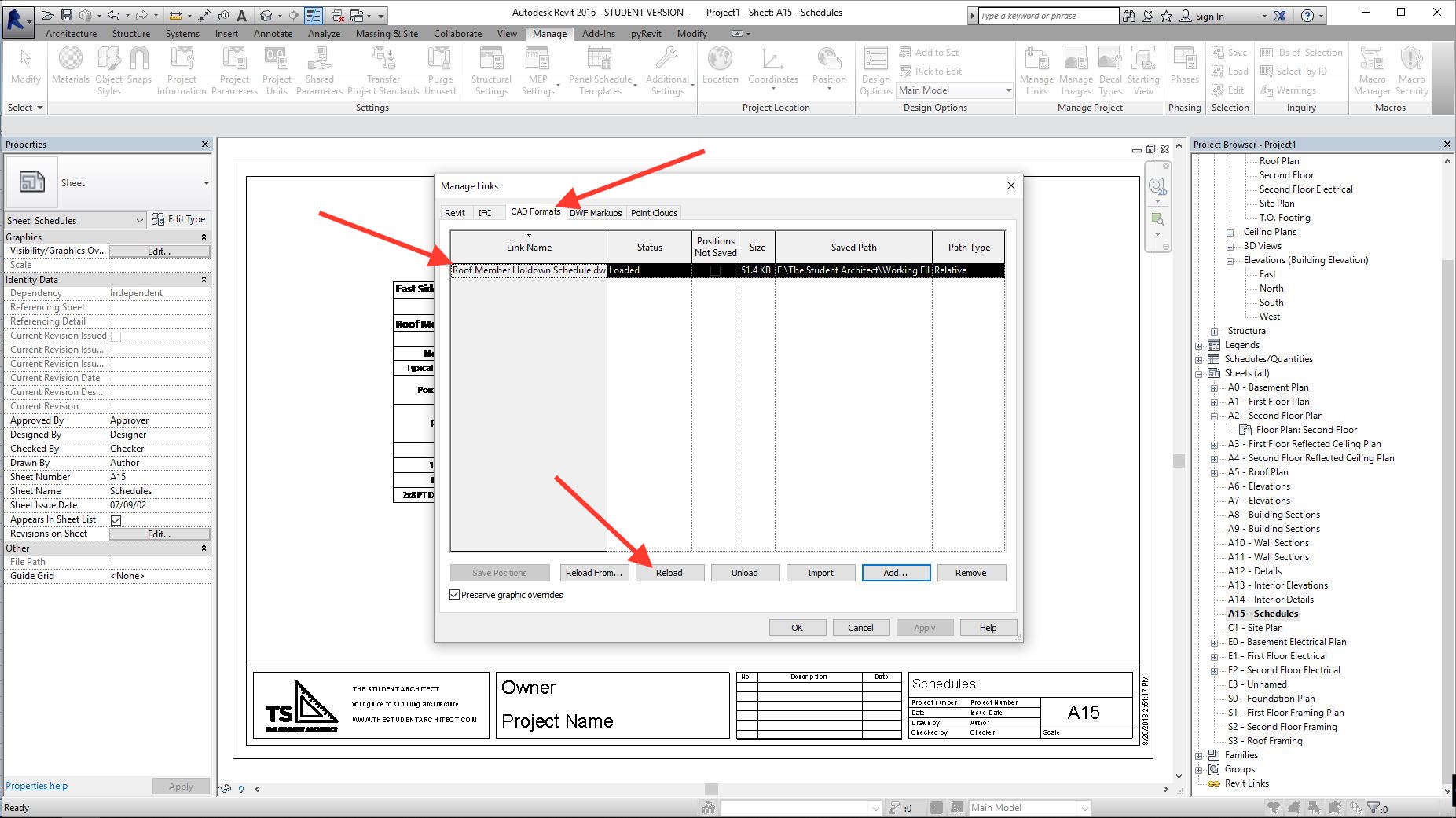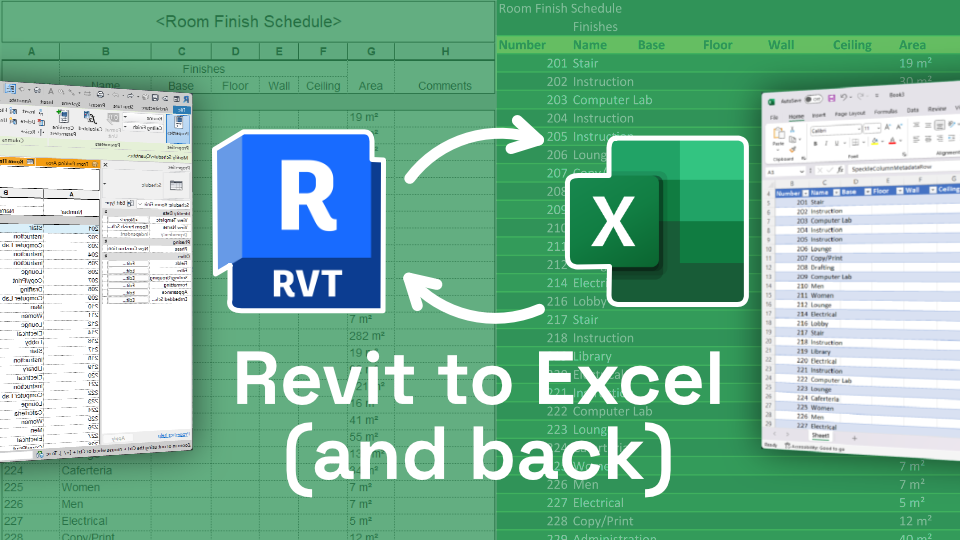Import Excel into Revit: Improving Your Operations
Wiki Article
Breaking Obstacles: Excel Importation Techniques for Advanced Revit Users
Check out different information importation approaches and master Excel combination to enhance your Revit modeling capabilities. With our ideas and methods, you can get rid of importation obstacles and come to be a real expert in making use of Excel for your Revit jobs.Advanced Revit Users: Leveraging Excel for Importation
You can quickly utilize Excel for importation as an advanced Revit individual. Excel is an effective tool that can considerably enhance your operations and performance in Revit. With its ability to manage huge amounts of data and execute complex estimations, Excel can be a valuable property in handling and organizing your job details.One method to leverage Excel for importation is by utilizing the "Link Excel" function in Revit. This function enables you to link an Excel spread sheet straight into your Revit job, allowing you to update and synchronize data between both programs. When dealing with routines or tracking modifications in your job., this can be particularly useful.
An additional means to make use of Excel is by utilizing the "Import/Export" attribute in Revit. This feature permits you to import and export data between Revit and Excel, giving you the adaptability to deal with information in both programs. You can import data from Excel into Revit to develop elements such as rooms, wall surfaces, or doors, and you can additionally export information from Revit to Excel for additional analysis or coverage.

Exploring Data Importation Methods in Revit Making Use Of Excel
Exploring just how to import data from Excel right into Revit offers reliable techniques for incorporating details. When you import data from Excel, you can flawlessly transfer data such as space routines, product checklists, and devices information right into your Revit job. This procedure allows you to conserve effort and time by staying clear of hand-operated information access.To import information from Excel right into Revit, you can use the "Import/Export" function. This attribute allows you to map the Excel data areas to the equivalent Revit parameters, ensuring that the information is properly appointed within the model. By selecting the ideal import alternatives, you can manage exactly how the information is imported and exactly how it interacts with your task.
One more approach for importing information from Excel right into Revit is by utilizing Dynamo. Eager beaver is an aesthetic programming device that integrates with Revit and permits you to automate workflows and tasks. With Dynamo, you can create customized scripts that import information from Excel and control it within your Revit job. This method provides a lot more versatility and customization choices.
Understanding Excel Integration for Advanced Revit Modeling
Understanding Excel assimilation for advanced Revit modeling involves utilizing efficient techniques to flawlessly transfer information and automate jobs within your task. By using the power of Excel, you can improve your Revit modeling process and conserve beneficial time. One key method is importing information from Excel spreadsheets straight into your Revit model. This allows you to populate parameters, such as space names or product amounts, easily. With a few straightforward steps, you can map the Excel columns to the matching Revit specifications and import the data accurately.Another helpful method is exporting data from Revit to Excel. This allows you to remove details from your design, such as schedules or product amounts, and assess it in Excel utilizing solutions, charts, or other effective devices. By leveraging the capacities of Excel, you can execute complicated computations, develop customized records, and gain beneficial insights right into your project.
Along with data transfer, Excel combination can automate repetitive jobs in Revit. By producing macros or manuscripts in Excel, you can automate processes like producing views, generating sheets, or applying common households - revit add ins. This not just conserves time however likewise makes sure uniformity throughout your project
To master Excel integration in Revit, it is essential to recognize the data framework and exactly how Revit engages with Excel. By familiarizing yourself with the readily available tools and techniques, you can unlock the full capacity of Excel assimilation and take your Revit modeling to the following degree.
Conquering Importation Obstacles: Excel Techniques for Revit Specialists
When conquering importation difficulties, it's essential to be acquainted with efficient Excel methods that can profit experts in Revit. As a sophisticated Revit customer, you recognize the value of perfectly importing data from Excel right into your jobs. You may experience various obstacles along the way. By utilizing efficient Excel methods, you can get over these difficulties and improve your productivity.
Another helpful technique is using the "Transpose" feature in Excel. This permits you to convert data from rows to columns or the other way around. When importing data right into Revit, this can be especially handy when you have information in a vertical style in Excel, yet you require it to be in a horizontal layout in Revit.
Furthermore, utilizing Excel formulas such as VLOOKUP and INDEX-MATCH can greatly help in mapping information from Excel to Revit. These formulas enable you to look for specific worths in Excel and recover corresponding data from one more column. When importing big datasets right into Revit., this can conserve you time and effort.
Excel Data Importation Advice for Advanced Revit Users
By acquainting on your own with reliable Excel pointers and techniques, you can improve your information importation procedure as an innovative customer of Revit. Furthermore, making use of Excel's "Paste Unique" feature allows you to paste data from Excel into Revit while preserving formatting, such as cell shade or font design. One more valuable trick is to make use of Excel's "Replace and discover" feature to quickly make changes to your information before importing it right into Revit.
Verdict
You have actually currently revit tools discovered beneficial methods for importing data from Excel right into Revit as an advanced customer. By leveraging the power of Excel assimilation, you can enhance your modeling process and get over any type of importation challenges that may emerge. With these methods and suggestions, you will have the ability to grasp information importation and improve your Revit skills. Go in advance, break those barriers and excel in your Revit projects!
When importing data into Revit, this can be especially valuable when you have data in an upright format in Excel, however you require it to be in a straight style in Revit.
Additionally, utilizing Excel solutions such as VLOOKUP and INDEX-MATCH can significantly help in mapping information from Excel to Revit. In addition, using Excel's "Paste Unique" attribute enables you to paste information from Excel right into Revit while keeping format, such as cell color or font style.
Report this wiki page